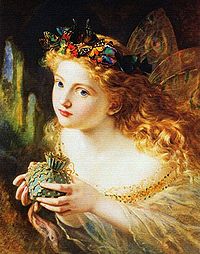
Private collection
Encyclopedia

Collection (museum)
A museum is distinguished by a collection of often unique objects that forms the core of its activities for exhibitions, education, research, etc. This differentiates it from an archive or library, where the contents may be more paper-based, replaceable and less exhibition oriented...
. If seen in a museum alongside a work or describing said work, it signifies that piece of art in a museum
Museum
A museum is an institution that cares for a collection of artifacts and other objects of scientific, artistic, cultural, or historical importance and makes them available for public viewing through exhibits that may be permanent or temporary. Most large museums are located in major cities...
is not actually owned by that museum, but is on loan from an independent source. This source will usually be an art collector, although it could be any curatorial platform
Curatorial platform
A curatorial platform is an organization whose principal activity is focused on the development and presentation of cultural artifacts according to clearly defined and coherent themes or organizational principles...
. Art collecting developed during the Renaissance
Renaissance
The Renaissance was a cultural movement that spanned roughly the 14th to the 17th century, beginning in Italy in the Late Middle Ages and later spreading to the rest of Europe. The term is also used more loosely to refer to the historical era, but since the changes of the Renaissance were not...
and continues to the present day
Present day
The term "present day" is used to describe the approximate period of time that surrounds the present. Depending on the context, this period may be as narrow as referring to the immediate moment, or as broad as referring to the current year or decade...
. Originally nobility were the only ones who collected art, but later other wealthy industrialists adopted the habit.
Famous art collections
The Princely Family of LiechtensteinPrincely Family of Liechtenstein
The Liechtenstein dynasty, from which the principality takes its name, is the family which reigns by constitutional, hereditary right over the nation of Liechtenstein...
had works by such artists as Hals
Frans Hals
Frans Hals was a Dutch Golden Age painter. He is notable for his loose painterly brushwork, and helped introduce this lively style of painting into Dutch art. Hals was also instrumental in the evolution of 17th century group portraiture.-Biography:Hals was born in 1580 or 1581, in Antwerp...
, Raphael
Raphael
Raffaello Sanzio da Urbino , better known simply as Raphael, was an Italian painter and architect of the High Renaissance. His work is admired for its clarity of form and ease of composition and for its visual achievement of the Neoplatonic ideal of human grandeur...
, Rembrandt and Van Dyck
Anthony van Dyck
Sir Anthony van Dyck was a Flemish Baroque artist who became the leading court painter in England. He is most famous for his portraits of Charles I of England and his family and court, painted with a relaxed elegance that was to be the dominant influence on English portrait-painting for the next...
, a collection containing some 1,600 works of art, but were unable to show them since 1945 when they were smuggled out of Nazi Germany
Nazi Germany
Nazi Germany , also known as the Third Reich , but officially called German Reich from 1933 to 1943 and Greater German Reich from 26 June 1943 onward, is the name commonly used to refer to the state of Germany from 1933 to 1945, when it was a totalitarian dictatorship ruled by...
. The works were finally shown after nearly 60 years in storage.
Some important 19th/20th century collections remain whole:
- The Phillips Collection went on display in Washington, DC in 1921.
- Sergei ShchukinSergei ShchukinSergei Ivanovich Shchukin was a Russian businessman who became an art collector, mainly of French Impressionist and Post-Impressionist art, following a trip to Paris in 1897, when he bought his first Monet. He later bought numerous works by Paul Cézanne, Vincent van Gogh, and Paul Gauguin, among...
, was an important RussianRussiansThe Russian people are an East Slavic ethnic group native to Russia, speaking the Russian language and primarily living in Russia and neighboring countries....
art collector, mainly of French Impressionist and Post-Impressionist. - The Freer Collection became an important part of The Smithsonian -- the Freer Gallery of ArtFreer Gallery of ArtThe Freer Gallery of Art joins the Arthur M. Sackler Gallery to form the Smithsonian Institution's national museums of Asian art. The Freer contains art from East Asia, South Asia, Southeast Asia, the Islamic world, the ancient Near East, and ancient Egypt, as well as a significant collection of...
. - Other important collections such as The Vess Collection were broken up among family members over time. When this happens, it is a large loss to those interested in art as the initial vision of the collector is lost.

